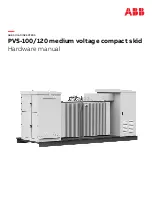
4 of 4
RX10 Ten-Zone Receiver Decoder
Section 1: Installation
Certain precautions in sighting of the unit apply. As with all radio equipment, attention must be given to
the aerial selected and where the unit is mounted in relation to the transmitter being monitored. If the
unit is to be used with a second transmitter, it should be sited as centrally as possible within the secondary
area to be covered, although it must of course be within adequate distance of the originating transmitter.
It is therefore essential that adequate signal reception is checked before fitting the unit in the desired
location. Using a Yaesu VR-120D Communications Receiver programmed to the required frequency, a
signal strength of 5 or greater is deemed to be sufficient to provide a reliable consistent link. Readings
below this level may lead to poor reception in adverse atmospheric conditions.
Ranges of up to 1 mile can be achieved quite easily except where the conditions are such that signal paths
are severely obstructed due to reflections or physical obstacles placed in the way. Such conditions may be
experienced where there are a large number of metallic structures around the site, or where the receiver is
sited in a hollow, i.e. below the level of the transmitter or its aerial.
To mount the unit on the wall, remove the two screws from the front of the case and separate the cover
from the base plate, taking care not to stress the ribbon cable which connects the front panel indicators to
the main circuit board, as well as the cables which connect the Reset switch to the main board.
For ease of installation, the ribbon cable can be removed from the main board by lifting the collar either
side of the connector (see diagram 1). This will release the locking mechanism and the cable can be
withdrawn. The Reset lead can be unplugged from CN7 on the main board.
The RX10 base plate should be fixed to an even wall surface using suitable screws fitted through the 4.75
mm holes provided in the chassis plate. Hold the chassis up to the chosen location and with the aid of a
pencil, mark the position of the mounting holes.
Place the base plate over the mounting holes and fit the fixing screws. Check that the chassis plate does
not bend and that the screws do not snag or pinch any internal cables.
Connect the antenna to the unit via the BNC connector located at the top of the housing. If the antenna is
an external type, or an antenna which is separate from the RX10 unit itself, care should be taken to ensure
that certain installation criteria are met, as detailed next.
Warning:
Do not use the chassis plate as a template for drilling the holes into the wall. Hammer drills
vibrating through the chassis may irreparably damage the quartz crystals on the printed circuit boards.


































